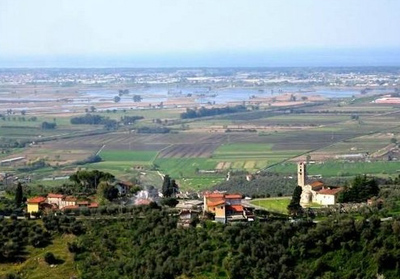
The name is Longobard in origin and comes from Massagrausi (the farm of Grauso), a wealthy man who owned most of the land in the area. In 932, king Hugo of Provence donated Massagrausi to the priests of the cathedral of Lucca.
Thanks to this, Massarosa was saved from expansionist ambitions of the Cattani family of Bozzano and Montemagno, but it was frequently under attack from Saracen pirates and the inhabitans of Massarosa obtained the right to construct a castle on a small rise in the north of the village.
Subsequently, they also obtained the status of castrum from Henry IV, Frederick I and Otto IV, according to which priests were the proprietors of a fief. The political and economic importance of the Jus of Massarosa therefore grew. In the 13th century the feudal potentate had to handle the political and military claims of the inhabitans who had formed a free municipality in the 12th century.
The disputes were so bitter that they required the intervetion of emperors and popes. In 1799 the State of Lucca took over the direct administration of the municipality of Massarosa, leaving only the ownership of land to the canons.
The parish church of Massarosa was probably built round about the 16th century, and over the years it underwent continuous modifications until it was completed in 1895. Inside there is a fine 16 th century altar-piece with the Madonna col Bambino benedicente tra i Santi Jacopo e Andrea, and 15th century marble shrine for hly oils.
Web-site: www.aptversilia.it
